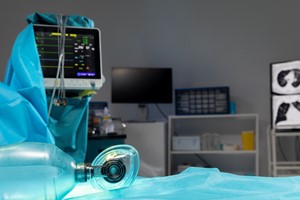Cataract, an opacification of the eye lens, which leads to a decrease in vision quality, is the leading cause of blindness in the world. In fact, cataracts affect roughly 25% of the population living in the MENA region. Fortunately, cataracts can be treated through a simple yet highly effective surgery that has become extremely common and successfully performed worldwide. While, modern medicine has provided a hassle-free solution to this condition, age is still an inevitable risk factor that leaves many aging patients curious about the condition and how they can prevent it. Dr. Luisa Sastre, a Specialist Ophthalmologist in Medical Retina and Cataract Surgery at Moorfields Eye Hospital Dubai weighs in to answer the most frequently asked questions about cataract and its treatment.
- How can one know they are developing cataracts?
Typically, most people will notice they have difficulty seeing distant objects in the early and intermediate stages of the cataract. In the late stages although the distant vision is very blurry, surprisingly some patients who once needed reading glasses, find that they don’t need them anymore. This is because the cataract can act as a reading lens for some time. However, the near vision will eventually worsen again. Additionally, frequent changes in prescription glasses, glares or increased sensitivity to light and changes in coloured vision are also common complaints. However, to catch the development of cataracts early, it is recommended to visit your ophthalmologist regularly as they will be able to monitor your eye health and flag anything that may be of concern.
- Do cataracts make it difficult to read text on coloured backgrounds and why?
The reading ability is frequently preserved until the late stages of the cataract, while most people experience decreased far sightedness in the early and intermediate stages of the cataract. Conversely, diminished colour vision can be seen in the early stages of cataracts. Colours appear faded as the crystalline lens inside the eye that was once transparent before the cataract, becomes brownish or yellowish when the cataract progresses. Over time, vision will be discoloured. Therefore, when the prints on a text have similar colour to the background, it can be difficult to distinguish them.
- Is there anything a person can do to prevent cataracts?
Wear sunglasses when outdoors: Excessive UV exposure can damage your cornea, your retina and can cause cataracts. Choose sunglasses with 100% protection against both UVA and UVB or glasses with 100% protection against UV 400. It is also important for children to get used to wearing sunglasses at a young age, as it is the cumulative damage over a lifetime that puts people at risk of developing sight-threatening eye disease.
Have a good metabolic control of your diabetes: Maintaining high blood glucose levels can cause early cataracts. Therefore, there is an increased risk of cataracts in diabetic patients which could create the need to undergo surgery at ages as young as the 30’ and 40’.
Avoid the use of steroids when they are not absolutely necessary: As the chronic use of all forms of steroids (inhaled e.g. to treat asthma, oral e.g. to treat inflammation, ocular drops e.g. to treat allergic conjunctivitis or ocular inflammation, in creams e.g. to treat eczema or other skin conditions) inevitably leads to early cataracts. The intake of supplements that contain steroids by body builders or athletes can help to improve performance and increase muscle mass, but frequently leads to early cataracts and other significant side effects.
Limit alcohol consumption and do not smoke: Limiting alcohol and smoking can increase overall health, which in turns improves eye health.
- How much do I have to wait to go back to my normal activity after cataract surgery?
Patients can go back to most of their activities right after the surgery. They can use their computer and mobile phone and, they can watch TV for moderate periods of time (although the image might not be fully clear in the first few days after the surgery and the eyes might get slightly irritated if the patient stays for long periods of time in front of screens)
However, there are several things that cannot be done on the following WEEK after surgery:
- No water inside the eyes - (so when having a shower somebody must help to wash the hair and if you’re planning to take a dip in the pool or in the sea, you must do it carefully as water should not enter in the operated eye, on the following week after surgery).
- No strenuous exercise and no lifting of weights (the patient can walk and move around normally, but no intensive cardiovascular activity is allowed on the following week after the surgery)
- No bending the head (for example, to get something that has fallen to the floor, we should bend our knees and keep our head high. Also when praying, bending the head it is not allowed on the following week after surgery).
- Are both eyes done at the same time?
One eye is done at a time, the second eye is normally done few days or a week after the first eye
- How long does the recovery take and when will I see? In most cases, the person notices a significant improvement in the vision in the following days after the surgery. However, sick leave for 1-4 weeks after cataract extraction will be arranged for the patient. Overall, the vision will take around one month to settle.
- Can a person who has had cataract surgery get them again and why?
During cataract surgery we extract the nucleus and the cortex of the cataract and we leave the posterior capsule of the cataract. This is a very delicate transparent membrane, that holds the intraocular lens that we introduce into the eye at the end of the surgery. So once the core of the cataract (nucleus and cortex) is extracted, it will never regenerate again. However, the posterior capsule that is transparent will become cloudy within the next 10 years after the surgery, causing vision loss again. This is often referred to as “secondary cataract”. When this posterior capsule opacification is significant, the patient will need to undergo a remarkably simple “cleaning procedure” to recover his vision again. This is a simple laser procedure called yag -capsulotomy and is done in the clinic and lasts around one minute. After this yag- capsulotomy is done, the person will not have any cataract again.
- Can a person get cataract surgery if they have dry eyes?
Dry eyes are quite common, and they are not a contraindication for cataract surgery. Your eye doctor should recommend a lubricant and anti-inflammatory treatment as needed so that the eye gets to the day of the surgery with the best possible situation in terms of moisture and inflammation. Immediately after the surgery the patient will complain of worsening of their dry eye. This is a common complaint, as the eyes get dry during the 10-15 minutes when blinking is not allowed during the surgery, even if it is constantly receiving lubricant drops (during the surgery).
- Can I have cataract surgery if I have previously had LASIK?
Yes, patients with a previous LASIK procedure can successfully undergo cataract surgery.
- Are there recent technological advancements in cataract surgery?
The “gold standard” technique for cataract extraction is still phacoemulsification. This procedure, that ophthalmologists all around the world have been using since the early 1990s, involves the use of ultrasound energy to dissolve and extract the cataract. It has proven successful on millions of patients. More recently femtosecond laser has been used to perform certain parts of the cataract surgery (e.g., incisions, capsulotomy and softening the nucleus). However, it’s use has not spread so much, not because of any complications with the technology, but because it’s expensive relative to the perceived amount of improvement it adds and because insurance companies are not covering it. Multifocal and extended depth of focus (EDOF) intraocular lenses are also relatively new developments in cataract surgery, they can correct both near and distance vision. So, they minimize the dependence on reading glasses after surgery, while conventional "monofocal" lenses only correct for distance vision.
Moorfields Eye Hospital Dubai














